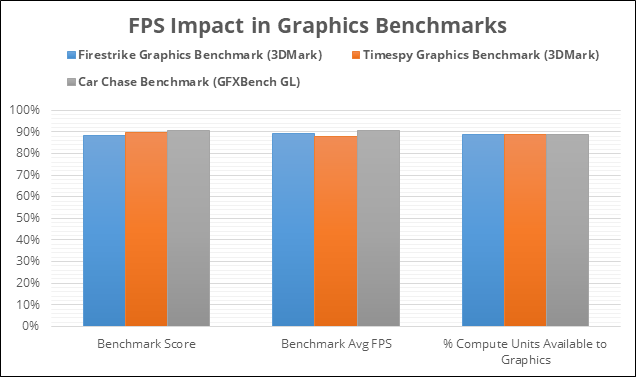The sun is not a point light, it's an area light. That's why you don't see airplane shadows cast onto the ground even in the clearest of days.Those are real life photos, how the real life fails to cast shadows?!?!
To compute the softening of the shadows, it is used the distance between the receiving point and casting point, and the distance to the light source.
If the distance to the sun is so big, so it is ignored, then this should make you realize how small the softening of shadows is in a sunny day without clouds.
Softening will happen mostly due clouds.
Install the app
How to install the app on iOS
Follow along with the video below to see how to install our site as a web app on your home screen.
Note: This feature may not be available in some browsers.
You are using an out of date browser. It may not display this or other websites correctly.
You should upgrade or use an alternative browser.
You should upgrade or use an alternative browser.
Next gen lighting technologies - voxelised, traced, and everything else *spawn*
- Thread starter Scott_Arm
- Start date
DavidGraham
Veteran
I am setting in a room right now with a single Neon lamp, and my shadow and the shadow of every object around me is soft, there is never a sharp shadow around me ever.In real life, in a sunny day, shadows are pretty sharp:
You mean like this?Those are real life photos, how the real life fails to cast shadows?!?!


But it gets us closer, RT shadows are better than not having shadows at all from these light sources. All games ship with lights that don't cast shadows, if we can get some of those lights to cast shadows through RT or any other mean, it's a win.We are far from being able to add a light for each of the candles in the scenes in Tomb Raider. Or for the many flames in the photos you provide. I don't think our RT RT advances can handle in real time so many light sources.
Actually the soft shadows in RDR 2 is not comparable to HFTS or RT shadows, shadows are low resolution on consoles to begin with, we'll see when the game come on PC whether their technique is comparable or not.Much, a lot much more prettier than Tomb Raider RTX.
You mean like this?
Sun close to the horizon is appearing wider. It has much more air in the middle, in between the target and the sun. Still much much less softening than the softening in tomb Raider where shadows are blurred near to disappearance.
About Red Dead Redemption 2, i have nothing to add. The game has awesome shadows.
I don't understand how you can ignore what you see, and quote some technical paper where they say the shadows on PS are low resolution. Are you not seying this??! RD2 is simply awesome!! You don't believe what you see, but you believe what you read.......
(you can have 16Kx16K shadow map if you wanted. This is the max in DX12.)
What are your real life photos more like? The left or the right:
DavidGraham
Veteran
That forest scene has no direct sunlight, the ambient lighting is soft, so soft shadows are appropriate.Still much much less softening than the softening in tomb Raider where shadows are blurred near to disappearance.
The game is full of interiors with "sharper" shadows and scenes with direct sun light with sharper shadows as well.

Source: https://www.nvidia.com/en-us/geforce/news/shadow-of-the-tomb-raider-nvidia-rtx-update-out-now/
Comparison: http://images.nvidia.com/geforce-co...ay-traced-sunlight-shadows-002-on-vs-off.html
You will see that with RT, the shadow of the box is more defined and of high res, appears far more accurate than the Ultra shadow map version, which just appears as a solid shadow box. Same for the car shadow.
The problem is: you are picking the game and the implementation apart based on very short limited videos, you need to either play the game yourself to connect the context of said scenes, or restrict your analysis to the clips you analyze, while asking for context.
Last edited:
The problem is: you are picking the game and the implementation apart based on very short limited videos, you need to either play the game yourself to connect the context of said scenes, or restrict your analysis to the clips you analyze, while asking for context.
I never said that, if you wait half an hour for V-ray to render an image, the shadows will look great. We are talking about Tomb Raider. And RD2 is like 10 times better looking than TR RTX On, when it comes to shadows.
It is not comparing half an hour per frame RT compared to RD2, it is RTX in TR compared to RD2.
And on the left it looks more like in the real world, because the scenery corresponds to a strong sun:

The lighting of the skin suggests it is a very bright day. And there are god rays too. And looking at the leaves, it is a very bright sun shining in the jungle. Look at the shadows the clothes cast on the skin too. On the left side, the old school approach is much more accurate with the scenery.
TR RTX ON is a meh...
Listening from a distance is almost as fun as being involved oneself
Pick up one of two visuals(regarding shadows) - Tomb Raider RTX ON or Red Dead Redemption 2.
DavidGraham
Veteran
When you play through the level and find that direct sun, make sure to post a picture of it here, cause from where I am standing I don't see it. And I already provided you with many examples in that source link of other scenes with direct sun light and sharper shadows.The lighting of the skin suggests it is a very bright day.
I don't know what is what actually, you are jumping all over the place, saying more shadows are inaccurate, then Metro has bad RT shadows, then soft shadows are unrealistic then RDR2 has better shadows, it's like you are looking for ways to tear it down and having a hard time coming up with valid excuses in doing so.It is not comparing half an hour per frame RT compared to RD2, it is RTX in TR compared to RD2.
Whatever ..TR RTX ON is a meh...
I don't know what is what actually, you are jumping all over the place, saying more shadows are inaccurate, then Metro has bad RT shadows, then soft shadows are unrealistic then RDR2 has better shadows, it's like you are looking for ways to tear it down and having a hard time coming up with valid excuses in doing so.
And you wanna sell RTX....
Whatever ..
He thinks it is a meh too:

and 1300 people who liked his video.
I am so glad i never publish my code. Thinking that certain people will read it and use my work is killing me.
DavidGraham
Veteran
Yeah? I seem to have misplaced those Amazon RTX GPUs links, thanks for reminding me!And you wanna sell RTX....
And now RTX is meh because someone thinks it's meh! And because of 1300 likes! What a great scientific analysis!He thinks it is a meh too:
With the way you talk about graphics, I am certain the reason is that it's just bad code.I am so glad i never publish my code. Thinking that certain people will read it and use my work is killing me.
Ok... Somebody told me RDR 2 has insane details (non GFX). After watching the video and seeing the horse can pee, i think i know what he means, hahaPick up one of two visuals(regarding shadows) - Tomb Raider RTX ON or Red Dead Redemption 2.
Picking better shadows is hard for me, because my problem is not the shape of shadows - it usually is the lack of bounce light in the shadowed regions. Both games show this problem.
Seeing accurate shadows from small holes in a plastic tray (screenshot above) is something new, but all i can focus on is the flat lighting of the car behind in the background. RTX on or off makes no difference here.
Looking at NV site there are some nice soft shadows, but interestingly i'm not impressed from this either. But i was impressed from some indirect skylight shadows in Metro. Conclusion: It is the light that matters to me, not the shadow.
With the way you talk about graphics, I am certain the reason is that it's just bad code.
You need years of experience to understand what i talk about. You can read many PDFs about it, but until you tried to code it by yourself, you are just not on my level.
Yeah? I seem to have misplaced those Amazon RTX GPUs links, thanks for reminding me!
Perfect outdoor visuals in RDR2, real 4K gameplay on hardware for 400$.
And you still try to sell me 1080p full of artifacts TR, on hardware for 3000$....
You desperately try to sell RTX!!
How can i delete my account in B3D?
A moderator can ban you, but your content will stay as others have already commented about it.
Edit: Consider it done.
+1Conclusion: It is the light that matters to me, not the shadow.
Shadows are really just an absence of lighting. Hard to debate this one.
Looking at NV site there are some nice soft shadows, but interestingly i'm not impressed from this either. But i was impressed from some indirect skylight shadows in Metro. Conclusion: It is the light that matters to me, not the shadow.
Well,"Shadow of the Tomb Raider" is just not the game for you then. You'll have to wait for their sequel: "Illumination of the Tomb Raider"
Last edited:
Well some impact can be felt
A lot of what is included in that second tweet was a big part of what @Shifty Geezer was also excited about IIRC.
I am very excited at the prospect of 3d audio being done with rays. I recall an old sound card vendor that did some advanced stuff but ended up dying out. I think it was Aureal A3D or something. It’s been a while
Improved Hearing and sight simulations for NPCs is also going to be great.
I am very excited at the prospect of 3d audio being done with rays. I recall an old sound card vendor that did some advanced stuff but ended up dying out. I think it was Aureal A3D or something. It’s been a while
Improved Hearing and sight simulations for NPCs is also going to be great.
Ike Turner
Veteran
That's what is being done with Steam Audio :A lot of what is included in that second tweet was a big part of what @Shifty Geezer was also excited about IIRC.
I am very excited at the prospect of 3d audio being done with rays. I recall an old sound card vendor that did some advanced stuff but ended up dying out. I think it was Aureal A3D or something. It’s been a while
Improved Hearing and sight simulations for NPCs is also going to be great.
https://forum.beyond3d.com/posts/2040951/
https://steamcommunity.com/games/596420/announcements/detail/1743360777226556930
We've just released Steam® Audio 2.0-beta.17[valvesoftware.github.io], which includes several new features, including support for real-time indirect sound simulation using AMD Radeon™ Rays. Previously, Radeon™ Rays was supported only for baking. With this release, Radeon™ Rays and AMD TrueAudio Next can be combined to perform indirect sound simulation and rendering on the GPU without interfering with graphics or general GPU compute. This blog post discusses how this works.
Previously, on Steam® Audio...
Over the last few releases, we have added features to the Steam® Audio that enable the GPU to be used in different ways for accelerating spatial audio computations.
In 2.0-beta.13, we added support for TrueAudio Next. This feature uses the Resource Reservation capability of supported AMD GPUs to carve out a portion of the GPU (called a "reserved queue") dedicated to audio convolution processing. This allows the GPU to be used for significantly speeding up spatial audio rendering, while ensuring that audio and graphics do not interfere with each other. The result is stable graphics frame rates, and fast, glitch-free audio processing.

Figure: Impact on GPU rendering performance when reserving 4 CUs for TrueAudio Next processing. The plots show the average FPS observed on various GPU benchmarks when run at the same time as a TAN benchmark using Steam®® Audio. Measurements obtained using a Radeon™ RX 480 GPU with 4 reserved CUs, 256 total convolution channels and 1.3s IRs. All values are shown as a percentage of a baseline that is obtained when the TAN benchmark is not running. For example, reserving 10% of the available CUs reduces the average FPS in the Timespy benchmark by about 10%.
In 2.0-beta.15, we added support for Radeon™ Rays. This feature runs on any GPU supporting OpenCL 1.2 or later, and uses the GPU to accelerate indirect sound simulation (ray tracing and related processing). Since the reserved queue was used by TrueAudio Next, Radeon™ Rays would run on the remainder of the GPU, along with graphics and general compute. If used for real-time simulation, it would therefore interfere with graphics frame rates, which is why this feature was restricted to baking only.
What's new?
Starting with AMD Radeon™ Software Adrenalin 2019 Edition v19.2.1, AMD GPUs support up to two reserved queues. In other words, the GPU compute units can be divided into three sets: 2 reserved queues, and 1 general queue. This feature (called "Dual RTQ") only requires a driver update.
In 2.0-beta.17, Steam® Audio runs Radeon™ Rays on the second reserved queue, thereby isolating indirect sound simulation from graphics as well. This way simulation (using Radeon™ Rays), convolution (using TrueAudio Next), and graphics can all be run on the same GPU without interfering with each other. This results in stable frame rates, glitch-free audio processing, and low-latency indirect sound simulation.
How Dual RTQ works
As an example, consider a Radeon™ RX Vega 64, which contains 64 Compute Units (CUs). A maximum of 16 CUs (25% of the GPU) can be used in all reserved queues combined. One way to partition this would be:
- First reserved queue, 4 CUs. Used by TrueAudio Next.
- Second reserved queue, 8 CUs. Used by Radeon™ Rays.
- Remainder of the GPU, 52 CUs. Used for graphics and general compute.
https://schedule.gdconf.com/session...re-software-and-tools-presented-by-amd/864866
Now the question is: Will this new Dual RTQ feature introduced in the latest Adrenaline 2019 drivers be used for DXR support on AMD GPUs...?
Last edited:
Similar threads
- Replies
- 25
- Views
- 3K
- Replies
- 608
- Views
- 96K
- Replies
- 21
- Views
- 11K
- Replies
- 90
- Views
- 18K
- Replies
- 50
- Views
- 17K

